As an Amazon Associate I earn from qualifying purchases.
French fries, onion rings, buffalo wings, and calamari are just some of the things that first pop in everyone’s mind when talking about fried food. And, let’s face it – whether it’s potato or onion, everyone has their guilty pleasures when it comes to fried goods.
However, to make sure the food truly is a pleasure, you’ll want the best home deep fryer, and we’re here to help you find it. We did our research and hand-picked the best of the best home deep fryers in four different categories. Whether you’re a beginner, an experienced home cook, or you have a large family and you need something big – we have your back with our recommendations.
Most home deep fryers on the market today are fully equipped with standard features like an oil filtration system, various size capacity, and an adjustable thermostat. But, there are many advanced functionalities you should keep your eye on, as they transform the frying process and deliver impeccable results.
In our buying guide, we discuss everything you need to know (and more) so you can make the right decision, so keep reading.
The Best Home Deep Fryer
Best Overall: T-fal FR8000 Deep Fryer

Pros:
The first thing we want to praise is the T-fal FR8000’s powerful performance and large capacity. The unit has 1700 watts of heat power, which cooks around 2.5 pounds of food in 1 gallon of oil. With just one batch, you can easily prepare food for your close family or even a small gathering of friends – and you won’t spend much time in the kitchen.
The fryer’s performance speaks a lot about its reliability, too. Thanks to the immersed heating element, the T-fal FR8000 will quickly achieve its desired temperature and fry each food piece evenly.
However, the feature that truly sets T-fal FR8000 apart from the competition is the unique oil filtration system. The device comes with two-position baskets, one on top of the other, and a filter between them. On the display control, you’ll find a dial that allows you to initiate the automatic oil filtration system. Once this happens, the filter will clean the oil and empty the filtered oil into the second basket – ready for your next frying session.
When it comes to convenience and maintenance, the T-fal FR8000 model comes through with dishwasher-safe parts. All you have to do is disassemble the inner container and toss it in the dishwasher.
Cons:
Unfortunately, the device is not suitable for small kitchens, as the unit is quite big and will take up a lot of space.
Additionally, some customers have complained that T-fal doesn’t offer replacement parts for the fryer, which means that if something breaks and it’s beyond repair, you’ll have to replace the whole unit or buy a new one.
The Verdict:
The T-fal FR8000 has it all, from power and efficiency to capacity and convenience. Although it’s far from being cheap, the T-fal FR8000 has a reasonable price considering everything it has to offer, which is why we believe it will be an excellent fit for most people. The unit is great for families and people who enjoy fried food daily.
Best Quality: Cuisinart CDF-170 4-Quart Deep Fryer

Pros:
A little more powerful than our best overall pick, the Cuisinart CDF-170 doesn’t disappoint with its1800-watt immersion heating element. The unit heats up fast and fries food in no time. You can cook up to 2.3-pounds of food in one batch, and you’ll need around 1 gallon of oil for that.
The Cuisinart CDF-170 features a control panel that includes a digital 60-minute timer, so you can set it up to remind you when it’s time to turn it off. The control panel also consists of a temperature control dial, which means you control every aspect of the frying process. You can even watch the food being fried through a glass window positioned on the lid.
The deep fryer is well-built from durable, high-quality materials. The unit features a heavy stainless steel basket that has a cool-touch handle. You can easily operate the device without fearing burns or hot-oil splashes.
Aside from frying french fries, potatoes, onion rings, and chicken wings, you can also fry vegetables, donuts, and even seafood.
Finally, Cuisinart backs this model with a three-year warranty, which is quite impressive as it’s the longest warranty among our recommendations, and probably the whole industry.
Cons:
We don’t advise using the device in closed, not ventilated areas, as it’s not well insulated and can leave your room smelling of fried food.
Just like the T-fal unit, the Cuisinart deep fryer is big and will take up a lot of space on the kitchen counter, so keep the dimensions in mind before buying.
The Verdict:
Cuisinart did a fantastic job creating the CDF-170 deep fryer, as the unit is very well-built, durable, sturdy, and efficient. Considering its advanced functionalities, like the adjustable timing and temperature, the Cuisinart CDF-170 is, without a doubt, an appealing choice for professionals and experienced cooks.
Best on a Budget: Presto 05420 FryDaddy Electric Deep Fryer

Pros:
Not only is the device affordable, but it will further save you money on oil, as it has a 4:4 oil to food ration. This means that you only need four cups of oil to make four servings of your favorite fried food.
Beginners will especially love this device as it’s very user-friendly and straightforward to operate with. In fact, there are no controls to set because the machine automatically keeps the right temperature needed for frying the food to perfection.
The whole surface of the unit is coated with a non-stick material, both inside and out. You don’t have to worry about oil stains or cleaning time, as everything will come right off with soap and warm water.
The Presto 05420 is convenient and perfect for small kitchens. The device is compact, which means it can fit on any kitchen counter, and it also features a secure snap-op lid that stores the oil inside the fryer.
Cons:
While for some people, having a convenient and small appliance can be an advantage, for others, this can be viewed as a limitation. Experienced cooks and fry foods-enthusiasts won’t like the low capacity and no temperature control.
Another drawback is that the lid and the outer surface is plastic and gets super hot while frying, which means you can burn yourself if not careful.
The Verdict:
The Presto 06006 is a great deep fryer when you’re on a budget, or you want something simple and straightforward. Since there are no fancy controls to set and cleaning up is pretty easy, there’s nothing much you need to think about when using the device. The unit is designed to make your life easier and a lot tastier.
Most Versatile: Presto 06006 Kitchen Kettle Multi-Cooker

Pros:
Since it’s our most versatile pick, versatility is the unit’s most important feature. You can make soups, casserole, pasta, steam vegetables, or roast beef, pork, poultry, and even fish. Some customers have even said they use it to melt wax – so the possibilities of what you can cook or do with this device are endless.
Another advantage that also contributes to the versatility and flexibility of the Presto 06006 is the “Control Master” heat control, which you can regulate to achieve the desired temperature. Not only does this give you more control over the cooking process, but it also allows you to cook stew. Simply lower the heat to a minimum, and the Presto 06006 will double as a slow cooker.
The Presto 06006 comes with a glass lid, so you can see and follow the cooking process from beginning to end. This minimizes the chances of under-fried or burned food.
Finally, the device is easy to clean as it’s entirely dishwasher safe – of course, only after the heat control is removed.
Cons:
The drawback is that while versatile, the Presto 06006 is small – it can fry up to 1-pound of food at one bach. While this might not be a big deal for most, some people with big families might find this very limiting.
Additionally, the power cord attaches weirdly and might fall apart, according to some customers.
The Verdict:
This little appliance, designed primarily as a multi-cooker, proved to be amazingly handy in the kitchen and more than efficient as a deep fryer. It’s the perfect choice for people who want something practical they can use daily for a variety of meals.
Conclusion:
According to us and thousands of customers who weren’t shy about praising the device, T-fal FR8000 is the best home deep fryer on the market these days. If you’re looking for a large capacity unit that offers a lot of power and delivers flawless results every time, you should consider the T-fal’s model.
However, when money is not an issue, and you want the best quality without any compromises, then you should consider the Cuisinart CDF-170 deep fryer. By buying this device, you’re getting a large, efficient product designed to give you control over the frying process so you can make sure every ingredient is fried to your taste.
To contrast the overwhelming controls of the Cuisinart model, we have the small and simplistic Presto 06006 as our top budget-pick option. Offering quality and the bare essentials, the Presto 06006 will fry any food you put inside and still make it easy when it’s time to clean up. It’s the smart choice for beginners, occasional friers, students, and people with small kitchens.
Another small and convenient Presto deep fryer is the Presto 06006, which is our most versatile pick. The unit rightfully deserves its title as it can steam, simmer, roast, slow cook, fry, or even melt wax. Presto 06006 includes some advanced functionalities, and is easy to use and maintain, making it a very appealing home deep fryer.
Everything You Need To Know About Home Deep Fryers
There’s no denying that fried food is delicious and addictive! However, it’s not that easy to make. The oil needs to be at the perfect temperature, not too cold and not too hot. The timing also needs to be just right. If you do it right, the food turns out nice and crispy on the outside and tender and juicy on the inside. But if it’s not done correctly, it will be soggy and oily or burned.
Home deep fryers take away the guesswork because they’re designed to create the perfect conditions for frying foods.
Frying food has been around for hundreds of years, given that our ancestors fried food as a method of preservation. The first deep-frying units were merely pots of grease in which the food could be dropped into. There were no fancy baskets to submerge and no temperature dials to control the heat of the oil. However, in recent years, a lot of things have changed. Today, a wide array of home deep fryers are available and affordable.
Types Of Deep Fryers
Typically, you can find three basic types of deep fryers.
- Electric Deep Fryer
Electric deep fryers are the most popular for home use, and you’ll find a lot of different models with different functionalities. Since they’re used indoors, they’re generally smaller and more affordable than propane deep fryers. As the name suggests, the devices use electricity, which makes them safer than propane options.
- Propane Deep Fryer
Chefs and fry-gurus might argue for propane deep fryers as they tend to deliver crispier and smokier results. However, they’re more complicated to operate with, and beginners should be cautious. Unfortunately, the most significant limitation when it comes to propane-type fryers is that they can’t be used indoors.
- Air Fryer
Some people might not even count air fryers in the deep fryer category since they don’t use oil – which is the whole point of frying. However, their popularity grows and they represent a reliable alternative for people who like the taste of fried foods but also want a healthier option. Aside from being healthier, air fryers are more comfortable to maintain and clean, and they’re the safest fryers of all the types. On the downside, they’re a little pricier, and the taste will be different than traditional deep fryers.
Construction Quality And Functionalities
Most deep fryers are either made of cast iron or stainless steel. There are oblong versions, canister types, and skillet types as well. On the inside, some have a non-stick coating. There is usually a basket that comes with the unit, although in cheaper models, you might have to purchase it separately. Some sport a dual basket set up, which is nice for cooking more than one type of food at a time.
The upscale models generally have temperature controls, thermometers, a grease drain system, and an indicator light that lights up when the grease is hot enough to put the food in. Some have safety features such as automatic shut-offs and other helpful add-ons and certifications. Property damage caused by fryers amounts to millions each year, not to mention injuries. So safety is one consideration that should be taken into account when shopping for the best home deep fryer – but we’ll talk about safety features in detail later in the text.
Different fryers have different power capacities. There are units with higher wattage ratings that have more powerful heating elements. These tend to heat the oil quicker and bring it up to the desired temperature faster, too. This results in added convenience and better taste, in general.
While frying foods is nothing new, the use of modern home deep fryers is changing and improving all the time. The frying units your grandparents used are nothing like the fancy, luxurious ones of today, though, it’s your job to find the best one for you.
How To Find the Best Home Deep Fryer?
The expectations for the best home deep fryer are set high – you’ll want food fried to perfection every time. Some things about a home deep fryer are essential and are shared by all models regardless of their price, but there are those that have unique features as well.
When choosing a device, it’s important to compare different models to find the one that best suits your needs. Below are some things to take into consideration when doing so.
Capacity
Think about how many people you are cooking dinner for on a daily basis. Do you need a large machine that is capable of feeding a crowd with one batch, or you’re looking for something smaller? Preparing meals for a large family, gatherings, or even parties can be time-consuming and not worth it if you own a small deep fryer.
Typically, you’ll see deep fryers with labels like “4-cup”, “6-cup”, or “12-cup”, which gives you an estimate of how many servings you’ll get from one batch. For example, a 4-cup deep fryer makes approximately two servings.
Be careful, while some units may come with a smaller basket size, they offer multiple baskets settings. For example, if a unit has a 4-cup basket size, but provides two baskets, that equals an 8-cup deep fryer with one basket.
Safety Features
High-quality safety features are an essential concern, considering you’ll be operating with large quantities of scalding oil. Unfortunately, that makes deep fryers prone to starting fires, which is why you’ll want to buy a device that’s very well built and has advanced safety features like adjustable timing, oil quantities, and temperature, automatic shut-off setting, break-off cord, and so on.
Additional Features
Deep fryers have a lot of different features and functionalities. You may not even know you need them, but they’re sure nice to have. Some of those features are:
- Oil Change Indicator – some fryers feature an indicator that notifies you when it’s time to change the oil.
- Oil Drainage System – one of the most annoying tasks when operating a deep fryer is disposing of the oil, which is why buying a device that has an oil drainage system can genuinely make things easier.
- Built-in Thermostat – so you can accurately control the temperature.
- Multiple Deep Fry Baskets – if you want to fry two or more different ingredients at once, the multiple basket feature is a necessity.
- Cool Touch Handles – to make sure you don’t burn yourself while frying, look for models featuring handles or covers that stay cool when touched.
Before You Go
Finding the best home deep fryer is not an easy job, but that’s why we’re here to help. Hopefully, you’ve already found your perfect match among our recommendations, but in case you’re still hesitant, don’t forget to follow the links where you can check out current prices, in-depth product specifications, and customer reviews.
Also, make sure you visit our blog because we have many more product reviews and product guides essential for any kitchen. You can even find delicious recipes that will undoubtedly enrich your cooking experience.
Want to see our favorite home deep fryers one more time before you go? Here they are!


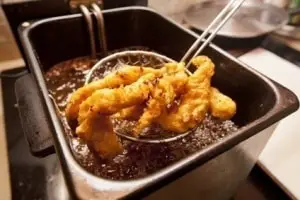

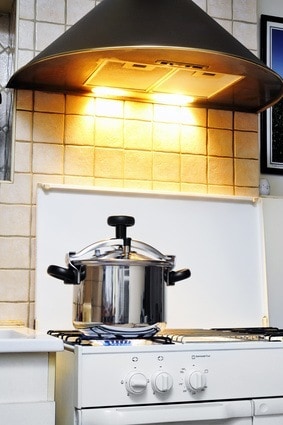





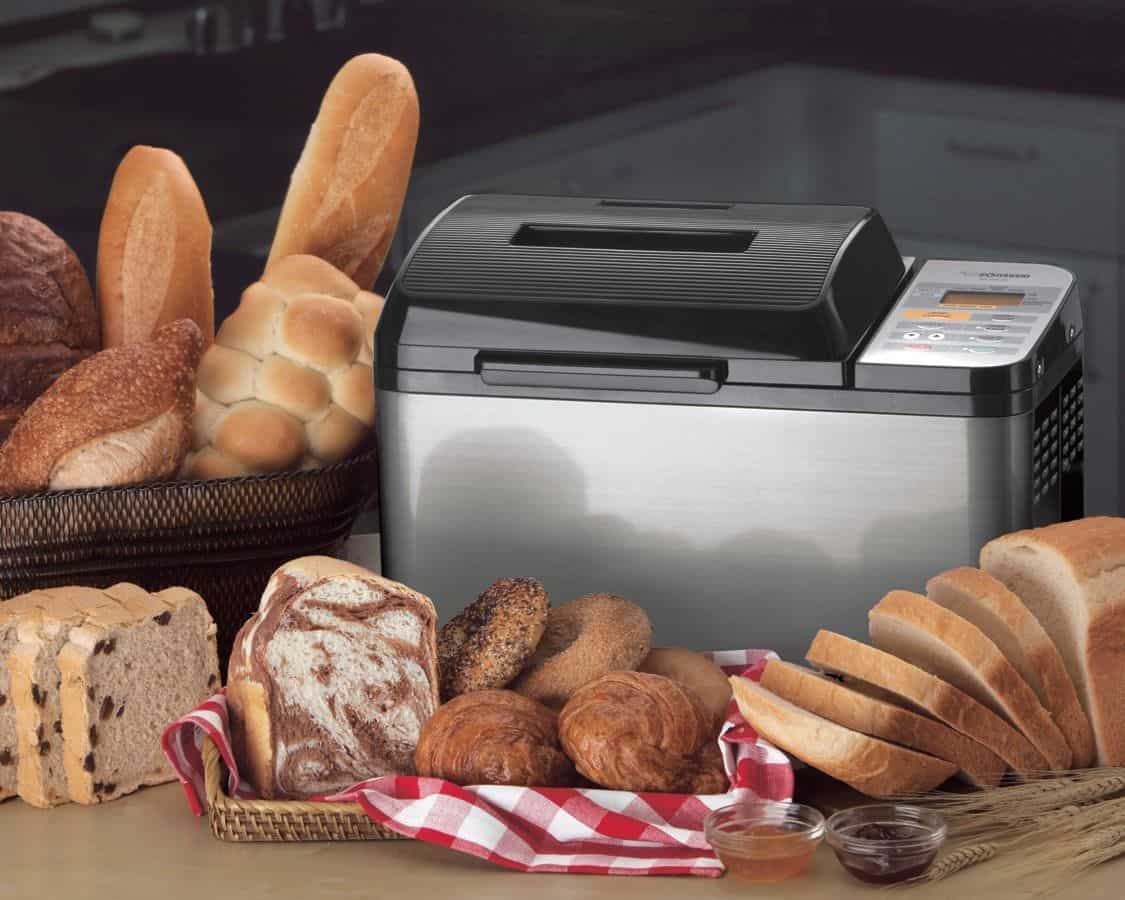
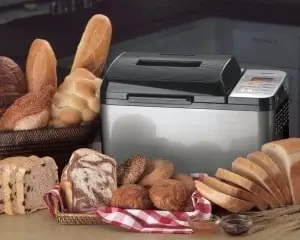




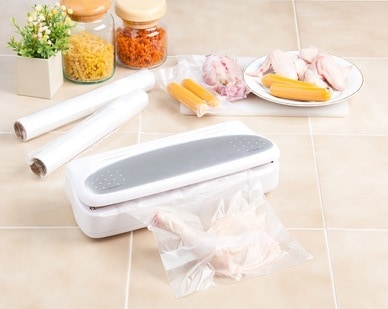
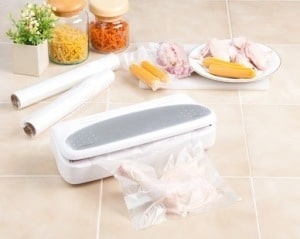




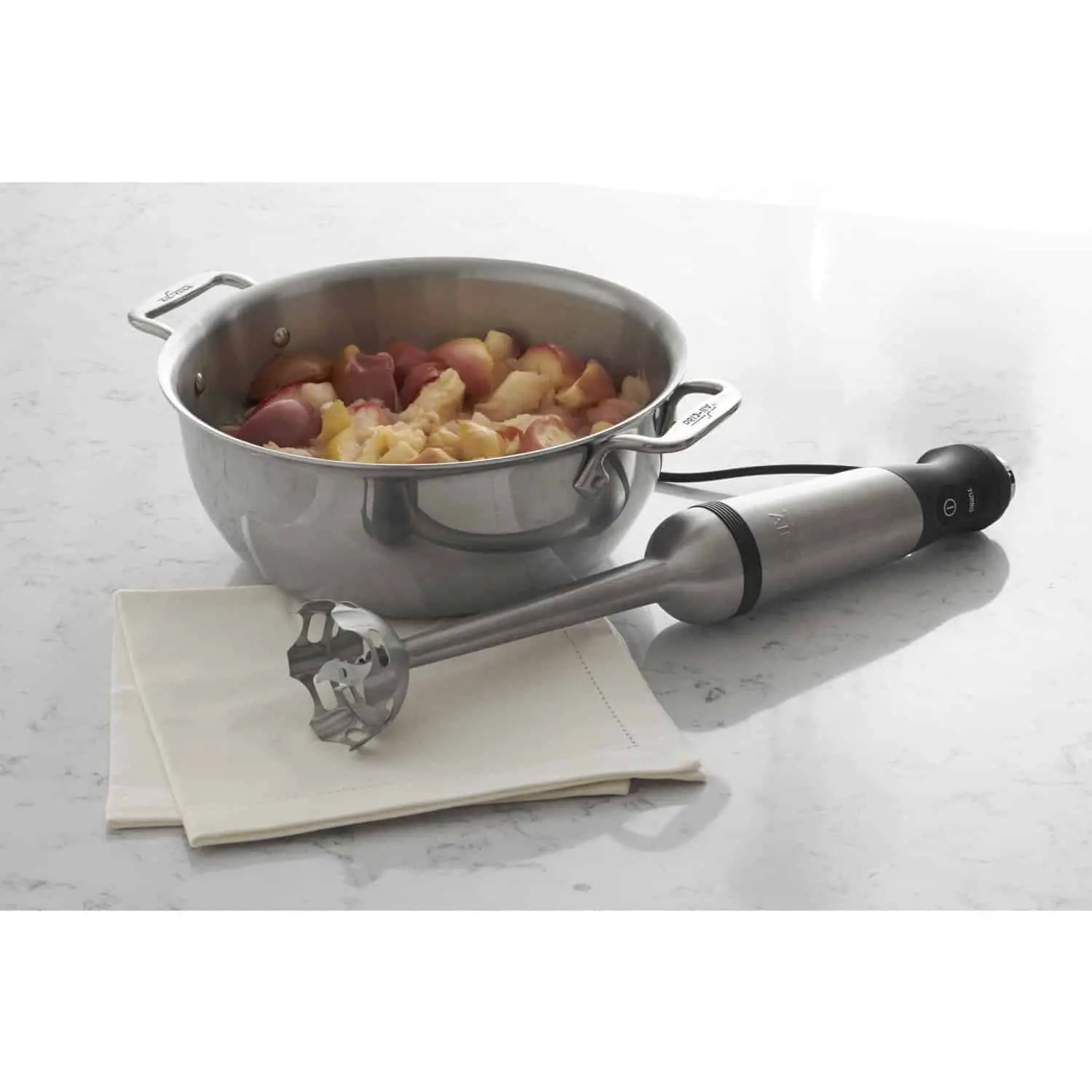
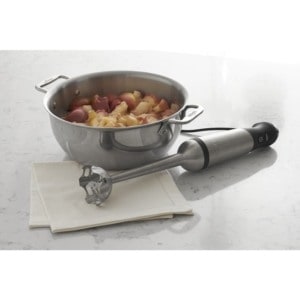





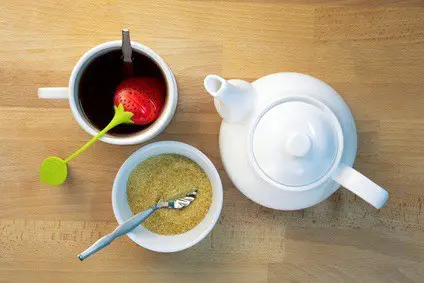





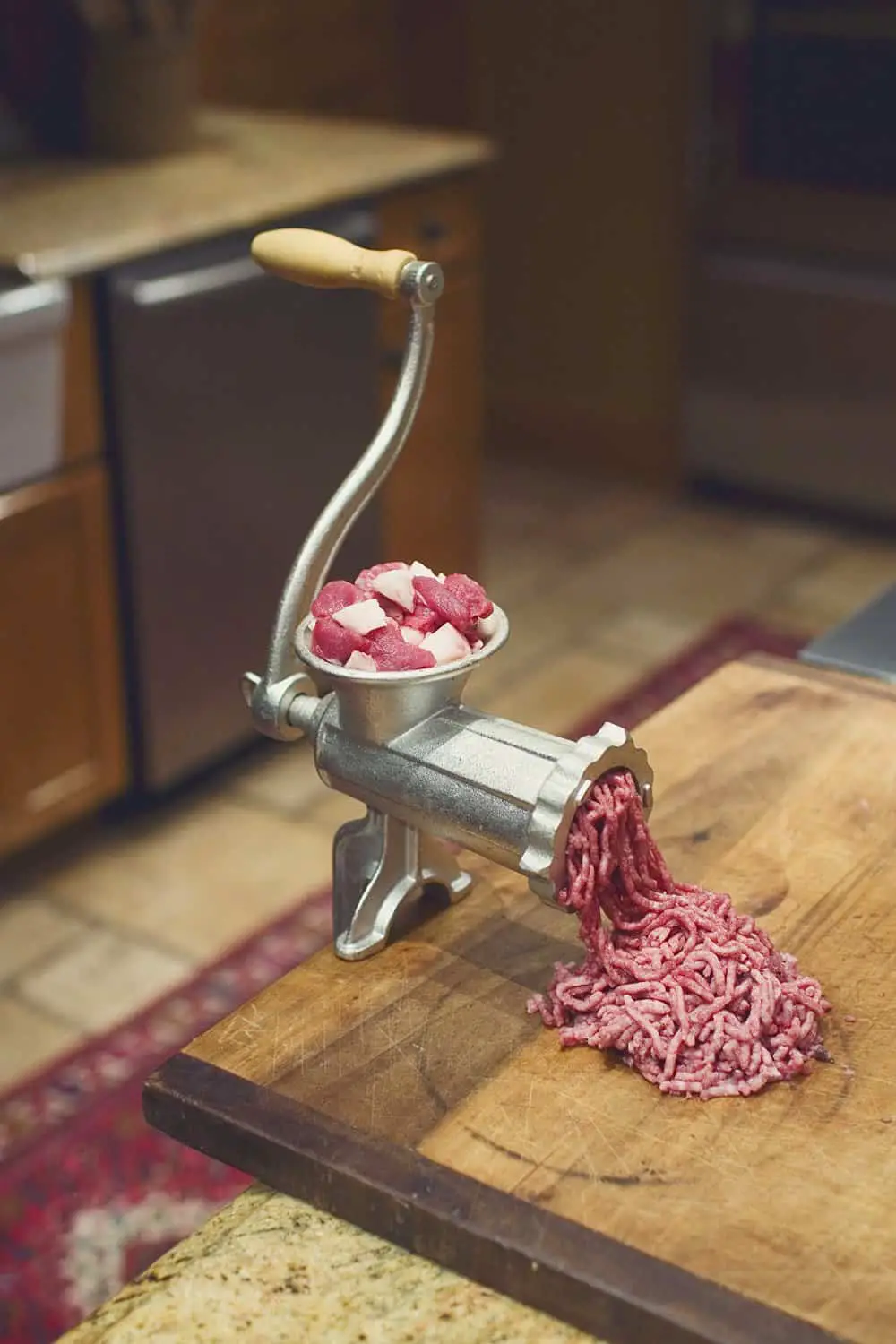










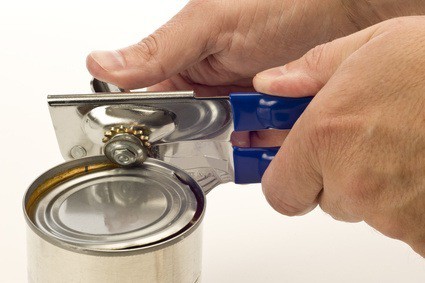





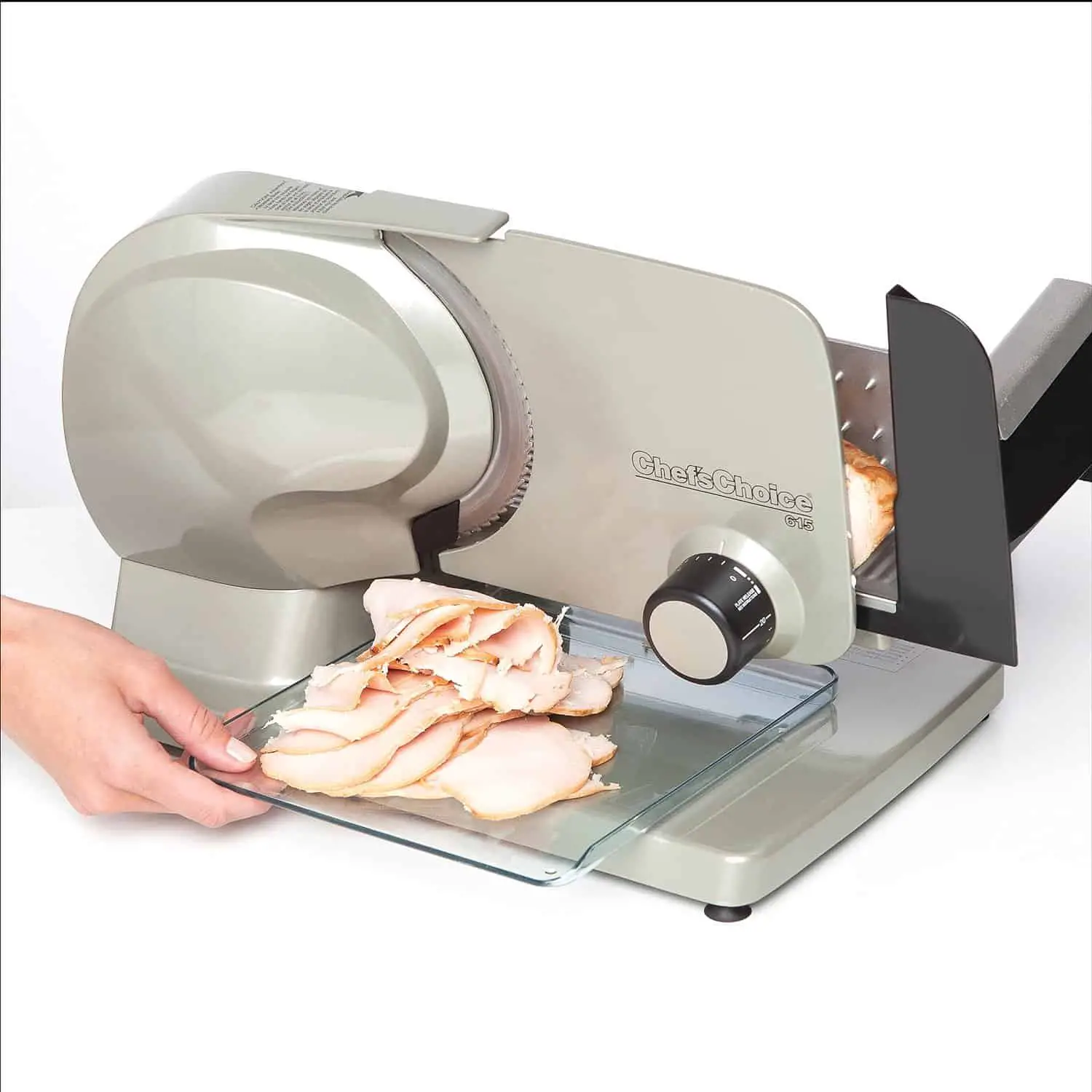


![KWS Metal Collection MS-10DT Commercial 320W 10-Inch Meat Slicer Anodized Aluminum Base with Teflon Blade + Blade Removal Tool, Frozen Meat/Cheese/Food Slicer Quiet [ ETL, NSF Certified ]](https://m.media-amazon.com/images/I/41zJbUpie6L._SL160_.jpg)

